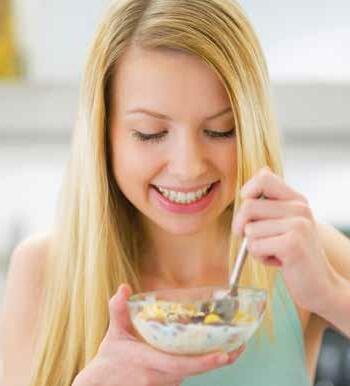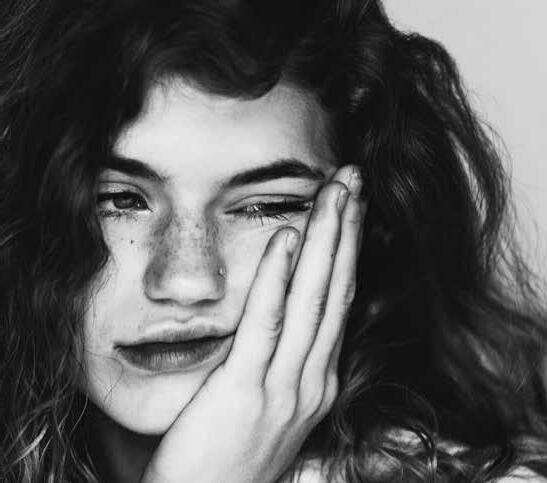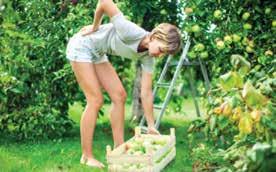
8 minute read
local insights
Happy Hormones
TREATING IMBALANCES IN GIRLS
Advertisement
by David Pollack, D.C.
Many young girls struggle with varieties of hormone imbalances. For a whole host of reasons, some girls around 12 to 13 years old can sometimes start making too much testosterone, the male hormone. Both men and women make testosterone and estrogen, but in a far skewed balance; males make significantly more testosterone than estrogen, and females viceversa. In fact, estrogen begins as testosterone in women before converted by the ovaries (~85 percent) and adrenal glands (~15 percent). For some girls, this chemical conversion doesn’t occur the way it should, and they end up making too much testosterone and not enough estrogen. This results in a host of possible symptoms and issues. Often the menstrual cycles are abnormal—either too heavy or barely present. They can also be painful and clotted. Emotions can be all over the place; many complain of anxiety, depression, even anger outbursts. Many girls have unflattering hair growth—dark hair on the face, chin, arms and legs. Often there is weight gain. Many of these girls end up with a diagnosis of polycystic ovarian syndrome (PCOS), which as the name suggests, presents with cyst growth on the ovaries, resulting in hormonal imbalances. Cysts may be present in other organs as well, such as the liver, thyroid and less often the kidney. Medically, PCOS is often treated with hormones in the form of birth control and sometimes the drug Metformin as there is a relationship to blood sugar issues. But many girls end up unhappy with the results, frustrated that little to nothing has changed. Although commonly practiced, forcibly altering an adolescent’s developing hormone balance might not be the for the best in the long run. Quite a few tomboyish girls visit their doctors at a younger age, but later, as their hormones balance naturally, start identifying more with their feminine attributes all on their own. Instead of artificially messing with the body’s hormone levels, a better practice is to find ways to help the multiple systems involved in hormone production and maintenance to normalize their functions so they can do what they are designed to do. One such system is the digestive system. Many girls seeking help for PCOS often complain of digestive problems in addition to displaying symptoms of hormone imbalance. Studies have shown that women with PCOS have a prevalence for dysbiosis— an imbalance in the ratio of good and harmful gut bacteria—and less diverse gut bacteria than woman without PCOS. Rebuilding the digestive tract by removing foods that feed harmful bacteria and cause inflammation, introducing plenty of prebiotic foods that feed beneficial bacteria, and encouraging healthful practices, such as getting enough sleep and exercise and staying hydrated, can often assist the liver or kidney systems to shrink the cysts. Healing is possible; it can often happen faster than people think.
Dr. David L Pollack is founder of Pollack Wellness Institute, in Commack, NY. For more information, contact him at 631-462-0801 or DavidPollackDC@gmail.com, or visit PollackWellness.com. See ads, pages 4 and 35.

Raging Pandemic
SUICIDE AMONGST COLLEGE STUDENTS
by Kelly Martinsen

Suicide is now the second-leading cause of death for U.S. teenagers and young adults. A national survey in the spring by the American College Health Association found one in four students had screened positive for suicidal thoughts and 2 percent had attempted suicide in the previous 12 months. With nearly 16 million undergraduate students nationwide, that makes for a staggering number of students thinking about and attempting suicide. When we hear of a young person taking their own life, we often find ourselves experiencing a moment of sadness while impulsively wondering, “Why?” George Colt, author of November of the Soul: The Enigma of Suicide, explains it as the need to attribute suicide to a specific cause so that we can then remove ourselves from the threat. He further describes the cause of most suicides is not one event but rather, “that they couldn’t see that it (life) would get better.” The individual had lost hope. Op-ed pieces have placed the spotlight on college athletes who have recently died by suicide, suggesting the stressful atmosphere within college athletics is the driving force behind their decision to end their lives. But of the 1,100 deaths, only seven were athletes, so this assumption is a dangerous diversion from the truth. Hopelessness is the linked co-morbidity preceding suicide. It is the mental health crisis plaguing our youth, the likes of which we have not seen in our lifetime. Times are different. Teenage lives are broadcast to an unfiltered audience. The endless burden for our youth to “post” their success, while at the same time scrolling through the posts of others who seem to be having more success than them, is perpetuating a cycle of selfcriticism and constant judgment. In 2001, when someone missed the winning basket at their D-1 school, or in 1992, when a young musician played the wrong violin note at their smaller private school, the mistake did not have the opportunity to “go viral.” Before social media, children still experienced disappointments, but they weren’t made harder to endure by seeing online everyone else who is “killing it” (or at least posting that they are killing it). Our children are navigating a tightrope where on one side is the risk of failure and on the other is the risk of others being more successful than them. In their minds, there is a unique digital permanence to these moments. This can lead to a loss of hope. We must continually screen and prescribe hope. When a glimmer of hope can be found, it often becomes even greater through the passing of time. With every single issue a child faces, they must be taught to understand that “this too shall pass.” This is our children’s pandemic. Colleges must screen for the disease of hopelessness with at least the same passion and fervor as a nurse verifying a vaccination card. Colleges must offer screenings, confidential, free counseling and more. When sending a child to college, ask the university questions: “Do you have mandatory mental health check-ins? Safe speech portals?” Ask emphatically, “What are your strategies in place to detect and treat hopelessness?” Then, ask yourself as a parent, “What are mine?”
Kelly Martinsen is a life coach for adults, parents and teens and the author of the book A Year of Inspired Living and the parenting book, You Are Almost There.
Enjoying Summer Activities without Back Pain
WANT TO AVOID AN ACHING BACK THIS SUMMER? TRY A FEW OF THESE SUGGESTIONS.
by Gina Marino, D.C.
Whether we’re gardening, traveling or just playing outdoors, summer fun often comes with back pain later. But that’s avoidable if we take a few simple precautions.
Gardening and Yard Work
Weeding, mowing, planting, raking and similar tasks can take a toll on the muscles, tendons, ligaments and joints in the back. Keep these tips in mind while doing yard work: • When lifting heavy items, ask a friend to help or use a wheelbarrow or dolly. • When painting or planting, take frequent breaks to prevent back stiffness. • Don’t twist your body when lifting or digging. • Use your arm and leg muscles, not your back, when pushing a mower. For big yards, consider buying a riding mower. • Use raised flower beds to reduce time spent bending over.
Traveling
Sitting for hours in a car (or plane or train) can cause back pain and stiffness. Prevent it with these techniques: • Use cushions to provide low-back and neck support. • When traveling by car, schedule time for frequent stops. • On a plane or train, get and take a walk through the car or cabin every two hours. (Walking helps prevent back pain and may also decrease the risk of a blood clot due to inactivity.)
Playing Summer Sports, Hiking and Biking
Swinging a golf club, tennis racquet or baseball bat can strain the back muscles and joints, particularly for someone with bad form or posture. According to the American Chiropractic Association, a force equal to 10 times our body weight is exerted on our spine during a golf swing. Playing these sports may also increase the risk of elbow and hip pain. A professional or coach can teach proper form. There’s also plenty of information about stances, swings and body mechanics in online videos. To avoid back pain or injuries while hiking, wear hiking shoes or boots that offer adequate support for the feet. Using a walking stick can improve balance and reduce pressure on the back. Spending hours in one position during a long bike ride can trigger back spasms and reduced range of motion. It’s critical that the bike size and seat height are right for the cyclist’s body. Someone who has to stretch to reach the handlebars or who’s sitting too high is more likely to strain their lower back.
Pain-Free Spectating
It’s not necessary to participate in a sport to suffer a sports-related injury! Just watching the game can be a painful experience. Bleachers or uncomfortable seats can increase pressure on the lower back and trigger inflammation. Frequent spectators—like parents whose kids play summer sports— should trying bringing a portable stadium seat with an attached back, and stand and stretch at regular intervals.
Preventing Summer Back Pain through Chiropractic Care
Regular chiropractic treatments keep the spine properly aligned and the muscles, ligaments and tendons loose and flexible. Treatments can be tailored to a specific sport or activity and can correct postural imbalances to improve performance and help prevent back pain.

Gina Marino, D.C., owns the Center for the Alignment of Body, Mind and Spirit, located at 2050 Wantagh Ave., Wantagh, NY. For appointments or more information, call 516221-3500 or visit Align-Me.com. See ad, page 9.









